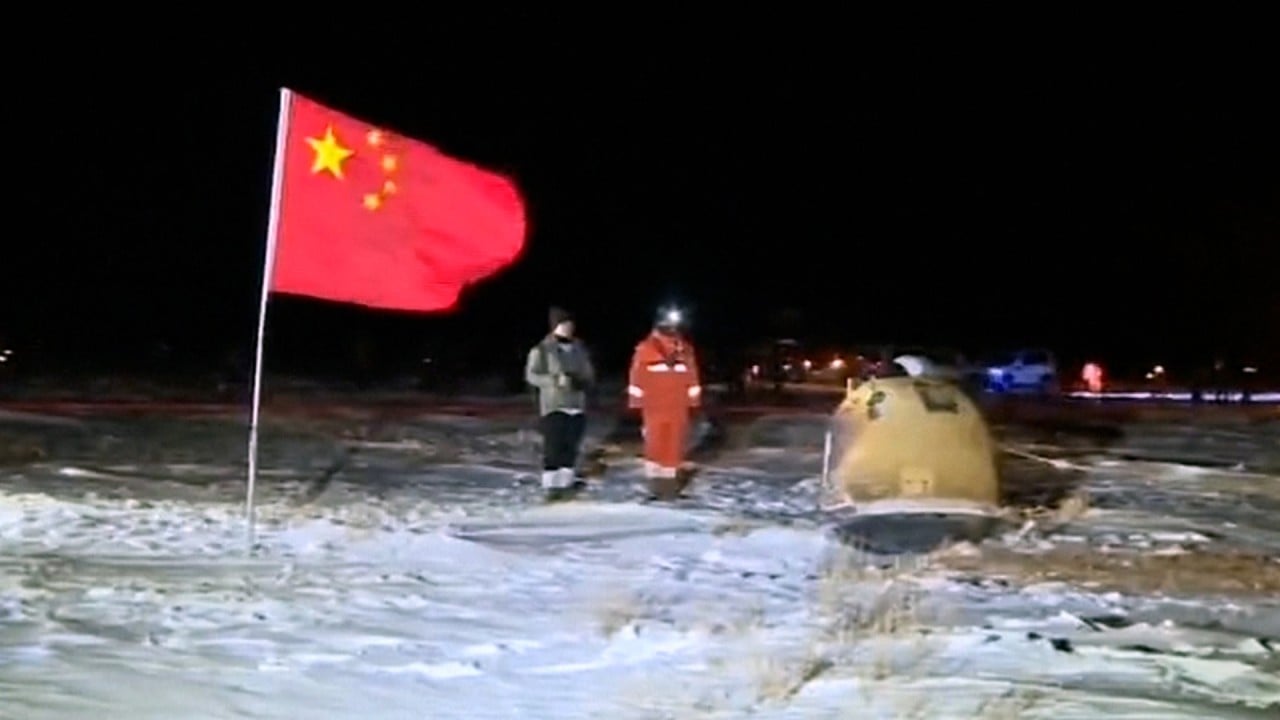
Scientists in China call for Chang’e 5 moon mission research to be published in Chinese to make it accessible at home
- Access to results research on publicly funded missions limited in China, scientists say
- Some domestic journals available in Chinese and English, publisher says
Lu Hongbo, a retired professor of geology with the China University of Petroleum in Qingdao, said access to the papers had been limited because they had been released in a language that most people in China did not understand.
“Don’t forget there are many young students and earth science fans in China who want to have examined the original content rather than some translated, bragging reports,” Lu said.
Three of the papers appeared in the journal Nature, which charges readers an annual subscription of €186 (US$216) for access to the full text.
One of the other papers was published in Science and another in the National Science Review, an Oxford University Press imprint under the auspices of the Chinese Academy of Sciences. Both Science and the National Science Review papers are open access.
The Chinese public’s access to the information on what was found on the moon “must not be blocked”, Lu said, adding that the mission was publicly funded.

01:28
China’s Chang’e 5 lunar mission returns to Earth with moon samples
In 2007, when China sent the first Chang’e probe to the moon, the cost of the mission was 1.4 billion yuan (US$219 million), according to the authorities.
But as the scale and complexity of missions grew, the budget grew to over 10 billion yuan by 2013.
The cost of the latest mission has not been released but it involved a CZ-5, one of the largest rockets in the world and sophisticated robotic technology. Some Chinese scientists estimate that Chang’e 5 could have been twice as expensive as previous missions.
Professor Zhu Zuoyan, editor-in-chief of Science China Press, said the company had not received a submission.
Zhu said some Chinese journals, such as Scientia Sinica Terrae, were published in both Chinese and English.
“Lunar soil studies are most suitable for publication in these academic journals,” he said.
The quality of Chinese academic journals had risen significantly in recent years, according to some Chinese researchers. The “impact factor” of some Chinese journals was growing at a rate of more than 20 per cent a year, and there was fierce competition with Western journals for exclusive, high-quality content, they said.
Professor Hu Sen, researcher with the Institute of Geology and Geophysics at the Chinese Academy of Sciences in Beijing and a lead author of one paper in Nature, said they could not comment on the matter.
“Our focus is science, not where the paper was published,” he said.

02:12
Chang'e 5 returning to China with lunar rock samples
Some Chinese universities offer bonuses to researchers whose papers are published in international journals such as Nature, Science and Cell because they are seen as increasing the university’s ranking.
The Chinese government has said that China’s scientific research would remain open to the world, despite growing tension with the United States and some other Western countries.
But recently the authorities also required researchers to “write papers down on the motherland”, citing a speech by President Xi Jinping in 2016.
When applying for government funding, at least one-third of a researcher’s “representative work” must be published in a domestic journal, according to the latest regulation.

